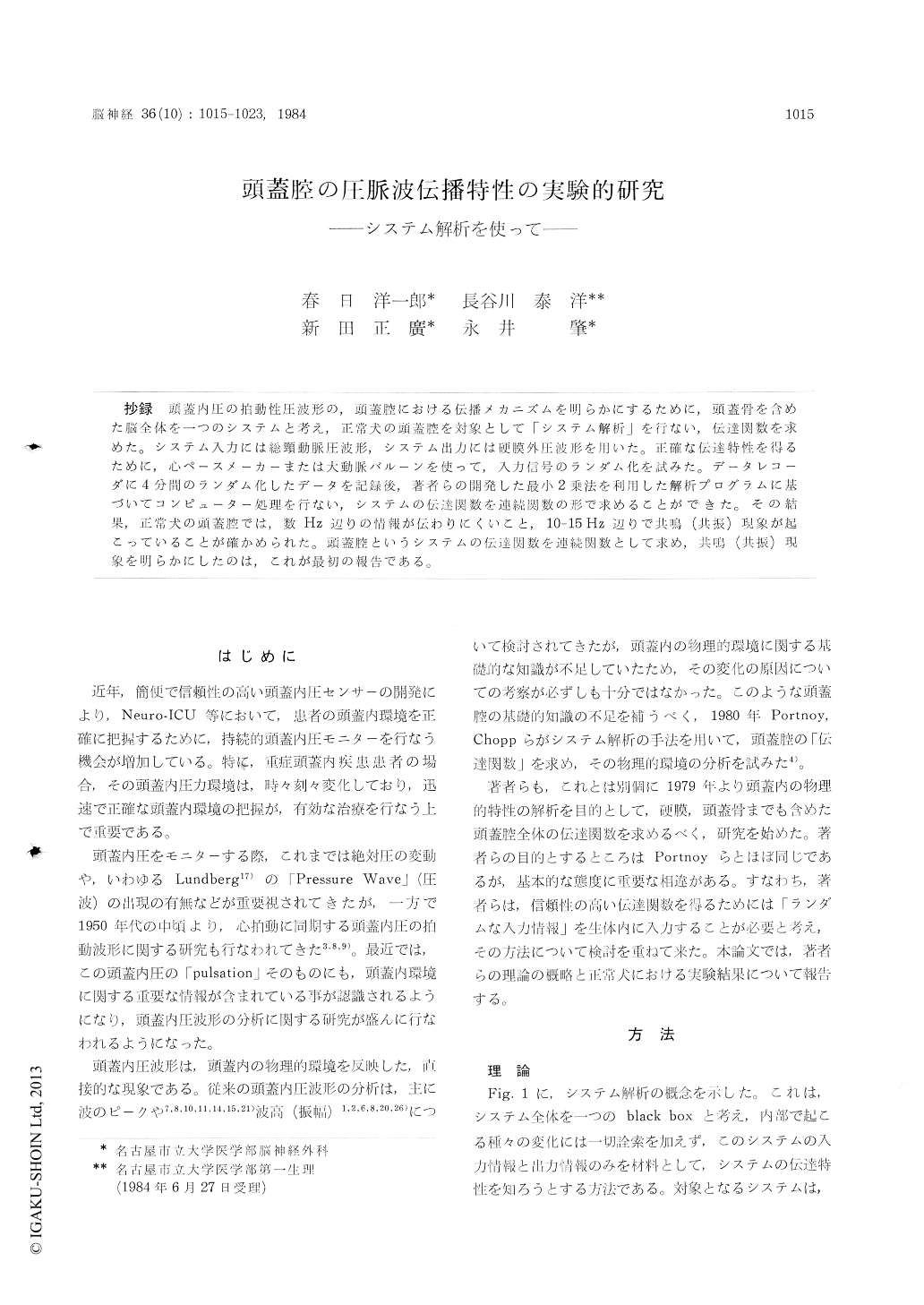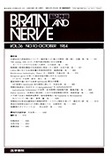Japanese
English
- 有料閲覧
- Abstract 文献概要
- 1ページ目 Look Inside
抄録 頭蓋内圧の拍動性圧波形の,頭蓋腔における伝播メカニズムを明らかにするために,頭蓋骨を含めた脳全体を一つのシステムと考え,正常犬の頭蓋腔を対象として「システム解析」を行ない,伝達関数を求めた。システム入力には総頸動脈圧波形,システム出力には硬膜外圧波形を用いた。正確な伝達特性を得るために,心ペースメーカーまたは大動脈バルーンを使って,入力信号のランダム化を試みた。データレコーダに4分間のランダム化したデータを記録後,著者らの開発した最小2乗法を利用した解析プログラムに基づいてコンピューター処理を行ない,システムの伝達関数を連続関数の形で求めることができた。その結果,正常犬の頭蓋腔では,数Hz辺りの情報が伝わりにくいこと,10-15Hz辺りで共鳴(共振)現象が起こっていることが確かめられた。頭蓋腔というシステムの伝達関数を連続関数として求め,共鳴(共振)現象を明らかにしたのは,これが最初の報告である。
Systems analysis of intracranial pressure pulse waveform was carried out in 6 dogs during nor-mal condition (normocapnia and intracranial nor-motension) in order to explore how to transmit the pressure pulse through the intracranial cavity. Pulses originated in the heart travel in the int-racranial cavity through the vessels, transmit into the cerebral tissue and finally reach to the dural surface. It can be speculated that the epiduralpressure pulse waveform might be influenced by the property of intracranial components. The intra-cranial cavity which consists of brain parenchyma, vessels, cerebrospinal fluid, blood, pia, arachnoid, dura and skull is considered as a kind of system. The systems analysis method was applied to it. The common carotid arterial pressure pulse wave was used as the input signal of system, and the epidural pressure pulse wave was used as the output. The intracranial pressure was measured by an epidural pressure transducer attached to the dural surface through a parietal burr hole. The common carotid arterial pressure pulse wave and the epidural pressure pulse wave were record-ed on FM analog tape. The characteristics of trans-mission are evaluated by the exact transfer function of system. We consider that the exact transfer function of system is obtained by the randomized input signal caused by the cardiac pacemaker or the aorta balloon. The power spectrum of input signal in this method didn't have a flat profile like completely randome wave (or white noise) but a gentle slope between 1Hz and 20Hz. There-fore, the result in our method may be reliable only on the waves between 1 Hz and 20 Hz. The weight function of the system which is considered as the transfer function was estimated statisticallyfrom auto-correlation function of the input signal and cross-correlation function between the input and output signals, utilizing least square method. By this way, the continuous trasnsfer function of intracranial cavity was obtained. Some character-istics of the pressure transmission through the system were observed under normal intracranial condition. At first, the gain curve of the system began decreasing to show one or two valleys between 2 Hz and 7 Hz, and then increased sud-denly to form a remarkable peak at about 10 to 15 Hz, where the phase curve also changed from positive to negative shift. These results suggest that the lower frequencies of the pulse wave were suppressed during transmission through the intra-cranial cavity, whereas the most acceleration in transmission was observed at about 10 to 15 Hz. In addition, there is resonance in the intracranial cavity under normal intracranial condition. This is the first report to find the resonance in the int-racranial cavity. At present, the meanings of resonance in the intracranial cavity is still un-known from our experiment but we believe the systems analysis of intracranial cavity gives us some important information about the intracra-nial condition.

Copyright © 1984, Igaku-Shoin Ltd. All rights reserved.


